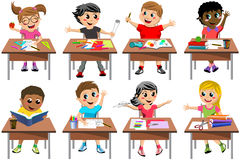
My 3 year old granddaughter was reading the word ‘but’ on a T-shirt. She said, “/bu/u/t.” She was adding a ‘sloppy /u/ sound to the consonant /b/.
This is common when we teach children to ‘sound out’ and we attach the /u/ sound to a consonant. For example, we say, /bu/ instead of just making the /b/ sound. A consonant needs a vowel (a,e,i,o,u, and sometimes y) to sound with. Therefore if we attach a “sloppy /u/” sound to a consonant, we are confusing the child. Children often write the word ‘hut’ like this: “ht” and they read “hut”. They do this because they heard /hu/ for /h/ often enough.
It is helpful to teach children properly to avoid this type of confusion. By using mobile/magnetic letters and moving them while making the appropriate sounds, the child will see, in a concrete manner, how to segment sounds in words.
Segmenting can be tricky for parents too, especially in advanced code words. It’s not unusual to hear children read words such as “bell” like this: /b/e/l/l/. They have not been taught that some sounds have more than 1 letter; therefore they apply the strategy they learned (one picture/letter=one sound).
Here are some examples of segmented advanced code words:
House /h/ou/se/ Hill /h/i/ll/
Frown /f/r/ow/n/ Hiss /h/i/ss/
Float /f/l/oa/t/ Bill /b/i/ll
Bread /b/r/ea/d/ Buzz /b/u/zz/
Table /t/a/b/le
Children should be able to segment sounds in spoken words and transfer that skill to written words. We are talking about sounds not letters. The ability to separate sounds in words is highly correlated to reading success.
If a child has difficulty in discerning individual sounds ( auditory processing) such as perceiving a word as a sound unit (ex: perceives ‘cat’ as 1 sound rather than /c/a/t/), this can be taught. A child can be trained to learn the correspondence between a symbol and a sound; this is called paired associated learning. When children learn to decode the visual representation of the sounds in spoken words, they are reading. Training through consistent practice creates success and increases self worth.
“The reward of a thing well done is having done it” – Ralph Waldo Emmerson
Love and Gratitude,
Alda
Source:
Reading Reflex. Carmen McGuinness and Geoffrey McGuinness
